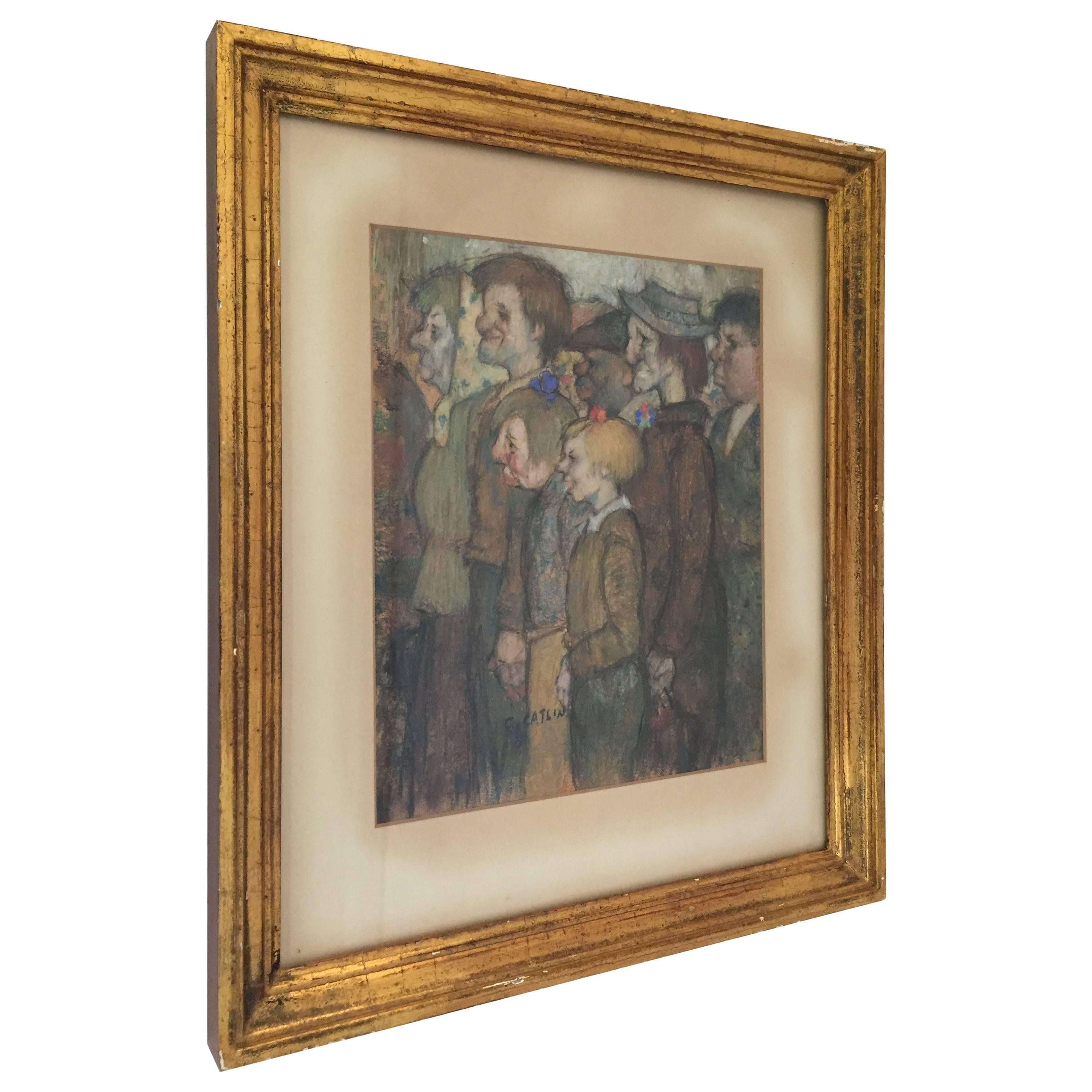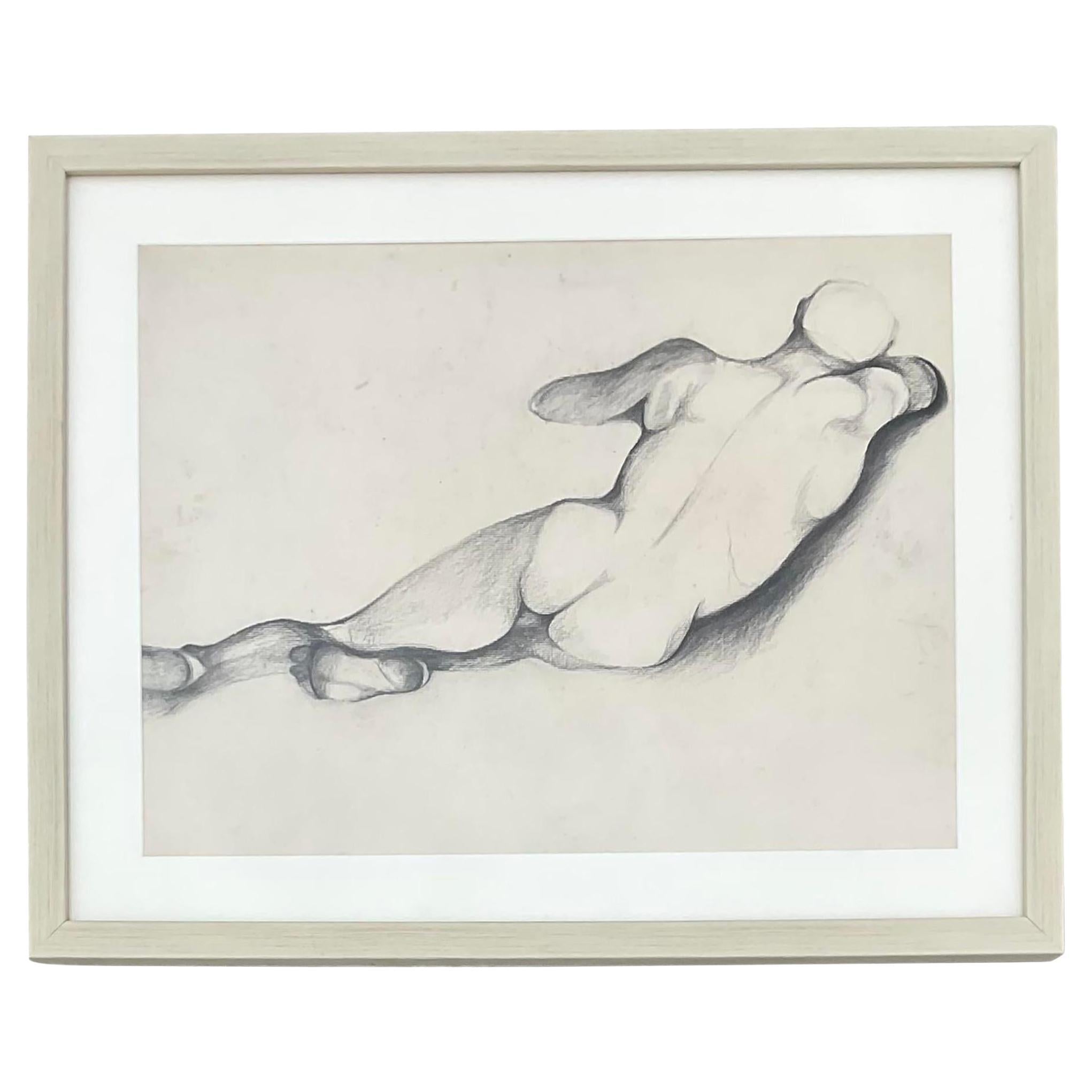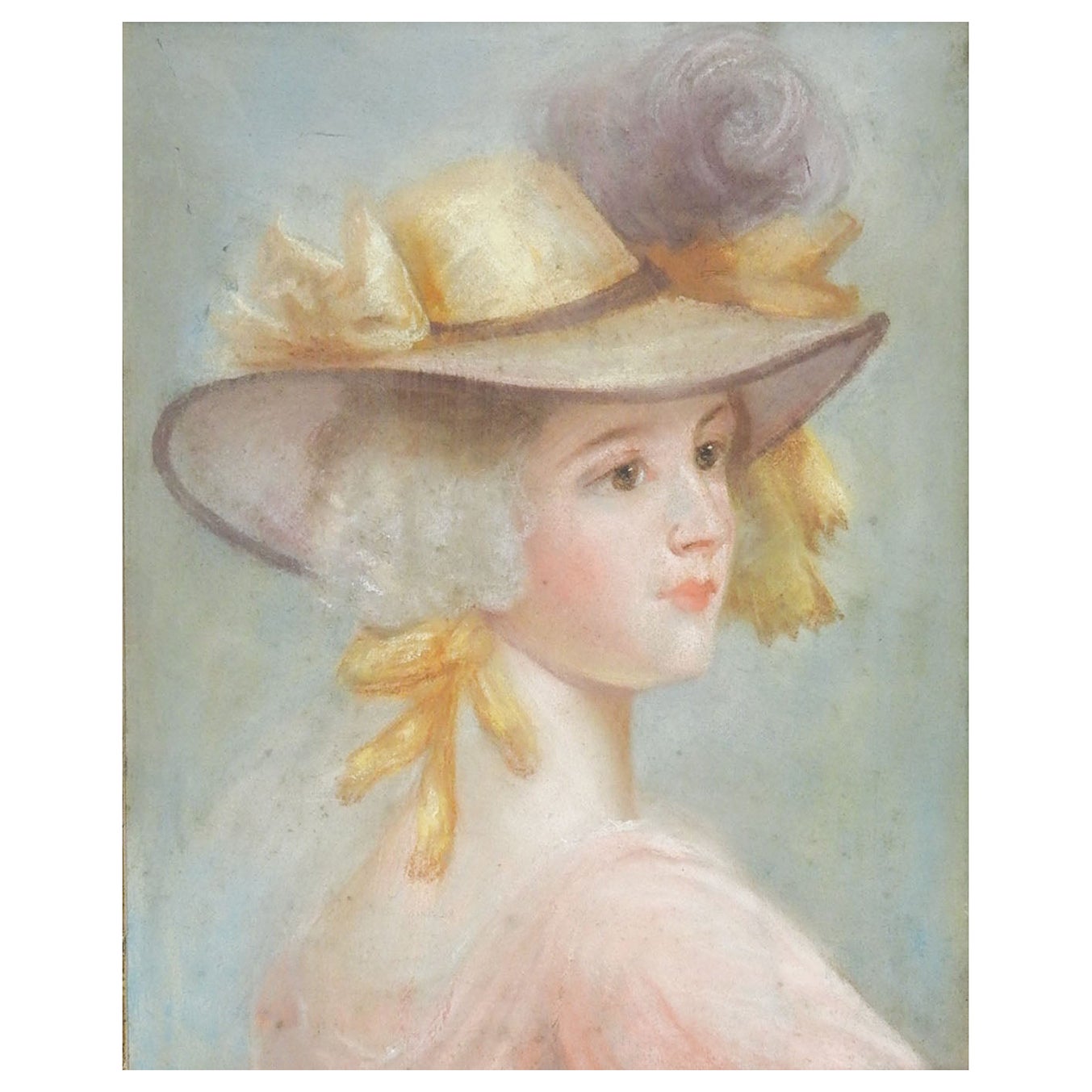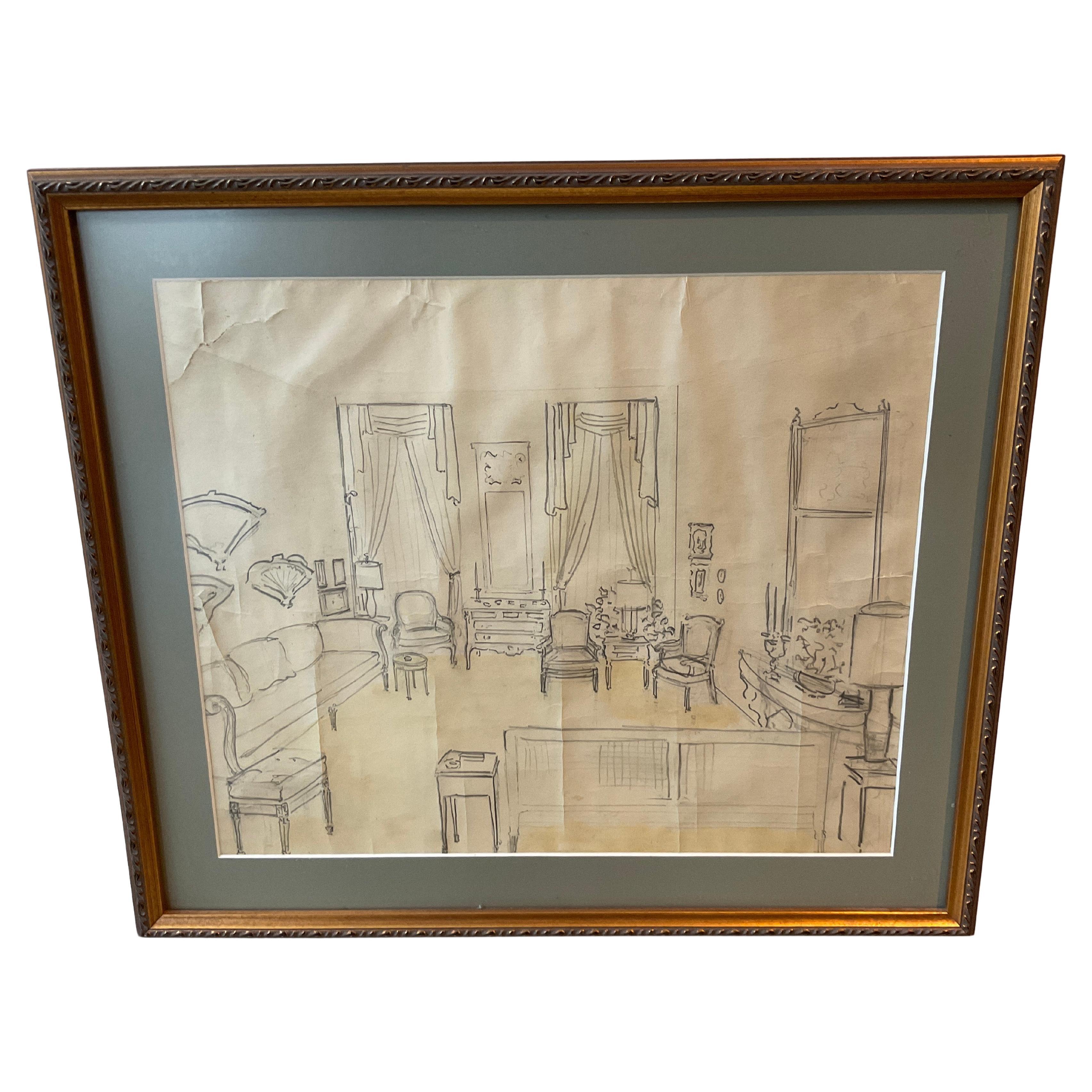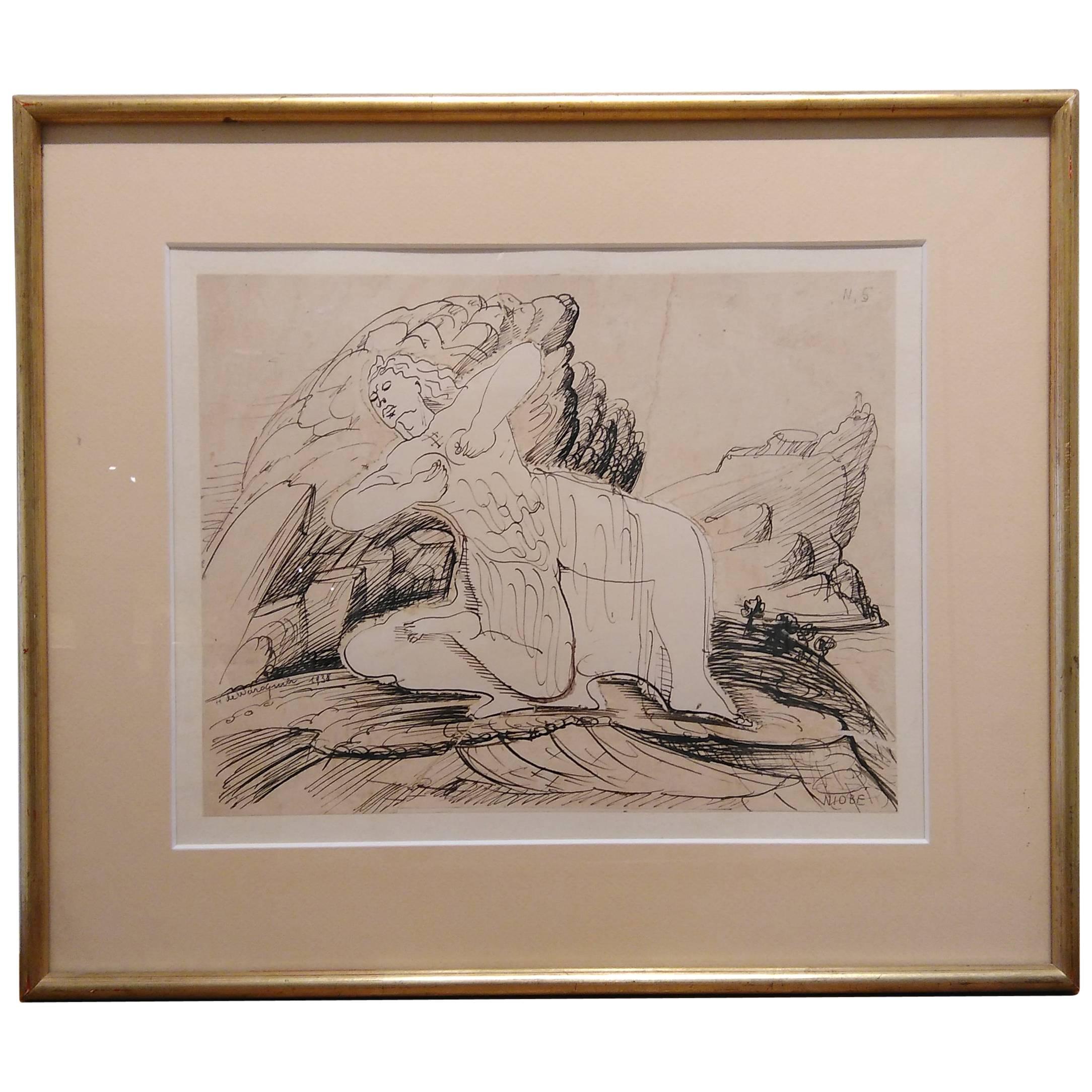Items Similar to Emilio Terry 1930s "Louis XVII Style" Bed
Want more images or videos?
Request additional images or videos from the seller
1 of 5
Emilio Terry 1930s "Louis XVII Style" Bed
About the Item
Emilio Terry -- architect, interior, and furniture designer -- was the inventor and sole-practitioner of what was drolly referred to as his “Louis XVII style.” There was in fact no such style, since the future Louis XVII died in prison, thanks to the Revolution, Heir to a Cuban sugar fortune, Terry didn’t need to make a living by catering to the prevailing taste for the moderne style, which allowed him to work in various historically based styles freely interpreted. Yet he didn’t lack for commissions from traditionalists and modernists alike, including Vicomte Jean-Charles de Noailles, Carlos de Beistegui, Stavros Niarchos, and the decorator Jean-Michel Frank, for whom he designed a furniture line. Among his admirers was Alfred Barr, director of the Museum of Modern Art, who included Terry’s work in his 1936 exhibition "Fantastic Art, Dada, Surrealism."
This pen-and-ink sketch of a bed on architect’s tracing paper has a splendid agitation. Suffocating under bolts of draped fabric, the supports are in the form of fasces -- a bundle of rods with an ax -- that been, since the days of ancient Rome, a symbol of the people's power in a republic. This drawing is now in a mat and a circa 1800 French giltwood frame.
- Creator:Emilio Terry (Designer)
- Dimensions:Height: 8.75 in (22.23 cm)Width: 12.5 in (31.75 cm)Depth: 0.5 in (1.27 cm)
- Style:Neoclassical Revival (Of the Period)
- Materials and Techniques:
- Place of Origin:
- Period:
- Date of Manufacture:circa 1935
- Condition:Wear consistent with age and use. Sheet size 5 1/4 by 8 inches.
- Seller Location:New York, NY
- Reference Number:1stDibs: LU1061416171462
About the Seller
5.0
Recognized Seller
These prestigious sellers are industry leaders and represent the highest echelon for item quality and design.
Established in 1994
1stDibs seller since 2014
- ShippingRetrieving quote...Ships From: New York, NY
- Return PolicyThis item cannot be returned.
More From This SellerView All
- 1930s Dressing Table MirrorLocated in New York, NYThis English 1930s mirror-framed dressing table mirror could also serve as a frame for a photograph. On the cresting are three acid-etched plumes...Category
Vintage 1930s English Rococo Revival Table Mirrors
- Mughal Indian MiniatureLocated in New York, NYThis Mughal miniature was painted at one of the princely courts of India. It depicts a raven-haired princess in a gold-trimmed saffron-colored silk sari. Under a glowering evening sky she dawdles on a white marble terrace, with a pet fawn on a leash, before a landscape dotted with buildings nestled amongst trees beyond a river. Her hair, falling loosely about her shoulders, rather than carefully dressed on her head, indicates that she is a maiden. The overall mood is one of expectancy. Perhaps walking a pet and catching an evening breeze is a pretext to escape palace scrutiny for a lovers’ assignation. In Mughal India tender sentiments were a bridge to the erotic – and if this seems contradictory, so too is the balance of realism and caricature, and naturalism with the schematic. Both are hallmarks of miniatures painted in this place and time. The earliest Mughal Indian miniatures date to the 16th century. They were inspired by those painted at the refined Moslem courts of the neighboring Persian empire. They incorporated figures in spite of the Moslem faith’s proscription against depicting the human form. Such was the nature of sophisticated courtly life everywhere that beauty and pleasure trumped systems of morality. This was no less the case at the provincial Indian courts, where our miniature, marked by a charming pictorial naiveté, was most likely painted. Yet the artist was undeniably accomplished. His command of perspective, introduced by Jesuit missionaries in the 17th century, is seen in the landscape, which rolls back to a distant horizon, contrary to the flat two-dimensional ones following Indian-painting traditions. And if Mughal artists were influenced by Western art, the compliment was returned by Rembrandt and Sir Joshua Reynolds, among others, who collected Indian miniatures (as did, perhaps, Giovanni Bellini who painted in Mughal style the famous miniature of a Persian man...Category
Antique 18th Century Indian Anglo-Indian Paintings
MaterialsPaper
- French Trompe L'oeil Drawing Circa 1800Located in New York, NYThis trompe l'oeil drawing depicts the artist's tools -- a black and a red crayon, and a folding steel ruler that was painted with silver pigments, which have blackened with age. They're shown on a sheaf of papers that include a medieval manuscript page, a musical score, and a group of prints. The unifying theme is the artistic patronage of the Medici, the Grand Dukes of Tuscany, who intermarried with the Habsburgs, who were the Holy Roman Emperors. Among the papers are prints by Stefano Della Bella, the Florentine artist who worked for the Medici. They depict a negro page with a horse, and portraits of Lorenzo Lippi...Category
Antique Early 1800s French Empire Drawings
MaterialsPaper, Paint
- Eugene Berman Collage in Original FrameBy Eugene BermanLocated in New York, NYThis haunting image by Eugene Berman was painted on a sheet of paper cut in the shape of a heart, mounted to a paint-speckled ground, encircled with metal shavings, and placed in a frame of the artist’s own devising. Berman wrote the title, Radiograph of a Heart, on the back. It refers to the medical X-rays that doctors had recently come to rely on. Yet Berman’s point seems to be that while a heart can be monitored scientifically, the emotions associated with it lie beyond the power of medical science. Russian by birth, Berman fled St. Petersburg during the Revolution and settled in Paris. Later, as a Jew, he fled the Nazi advance and took refuge in New York and Hollywood. His peace of mind, however, was shattered by the suicide of his wife, actress Una Munson (who played Belle Watling in Gone With the Wind). That distressing event — “Don’t follow me” she admonished in her suicide note...Category
Vintage 1940s French Modern Drawings
- 1930s Italian BenchBy Pier Luigi ColliLocated in New York, NYThis 1930s Italian bench is so over-scaled, and monumental in appearance, that it seems to have been made for the large room it was destined, rather than the comfort of a typical sitter. As such, it would function equally well as a low side table or a high cocktail table. We’ll allow the buyer to determine its use. The designer was Pierluigi Colli, and the fabricator Martinotti, the Turin furniture and interior decorating firm that was established in 1831, and exhibited at the 1876 Philadelphia Centennial Exhibition and the 1904 St Louis World’s Fair. Colli’s family owned a textile company that supplied Martinotti with upholstery fabrics, suggesting nepotism had something to do with his being hired as the firm's director in 1926. Nevertheless, he proved himself worthy as a designer and a businessman. Having studied in Paris at the Ecole des Arts Decoratifs, he befriended leading French designers, and arranged for Martinotti to retail Lalique glass and Jean Perzel lighting. In addition, the quality of their work, and Colli’s dedication to the modern design movement, prompted Carlo Mollino, Gio Ponti, and Gino Levi-Montalcini, among others, to have Martinotti fabricate some of their furniture. Colli’s claim to fame, however, is his own work as a designer, and his ability to master the vocabularies of every trend from Art Deco to midcentury modern. During the Great Depression, when nearly every nation floundered economically, fascist Italy...Category
Vintage 1930s Italian Modern Benches
MaterialsOther
- 1930s Venini ChandelierBy VeniniLocated in New York, NYThis late 1930s Venini chandelier has two rings of curved-glass elements suspended from a brass frame. It appears to glow magically from within because the glass elements are infuse...Category
Vintage 1930s Italian Modern Chandeliers and Pendants
MaterialsBrass
You May Also Like
- 1930s Christopher Henry Herbert Catlin PastelBy Christopher Herbert Henry CatlinLocated in Garnerville, NYSigned lower left, C Catlin. Oil crayon (pastel) on paper, circa 1930. The artist has depicted a working class crowd in pronounced profile. Framing treatment consists of simple gi...Category
Vintage 1930s Great Britain (UK) Art Deco Drawings
MaterialsCrayon
- Vintage Boho 1930s Pencil Sketch of ManLocated in west palm beach, FLA fantastic vintage Boho pencil sketch. A stunning rendering of a nude male in a reclining pose. Beautiful matted and framed. Acquired from a Palm Beach collector.Category
Vintage 1930s Bohemian Drawings
MaterialsWood
- 1930s Georgian Era Lady Pastel Portrait PaintingLocated in Seguin, TXPastel portrait on paper of woman in Georgian era pale pink dress and bonnet with yellow ribbons. Unsigned, circa 1930's. Unframed, displayed mounted o...Category
Early 20th Century Paintings
MaterialsPaper
- 1930s Designers Drawing Of A Living Room ProposalLocated in Tarrytown, NY1930s Interior Designers pencil drawing of a proposal of a living room.Category
Vintage 1930s Drawings
MaterialsPaper
- Vintage Boho 1930s Original Drawing of Nude MaleLocated in west palm beach, FLA fabulous vintage Boho 1930s original drawing. A chic pencil sketch of a nude male. Acquired from a Palm Beach estate.Category
Vintage 1930s North American Drawings
MaterialsPaper
- Signed Ink Drawing by Henry de Waroquier, France 1930sBy Henry de WaroquierLocated in New York, NYNiobe Greek mythology theme signed, 1938 framed (1 chip off on frame finish).Category
Vintage 1930s French Drawings
Recently Viewed
View AllMore Ways To Browse
French Hand Painted Bed
Modernist Bed
Vintage Ax
French Neoclassical Bed
Vintage Fabric Bolt
Vintage Fabric Bolts
Historical Beds
Painted Neoclassical Bed
De Noailles
Louis Xvii
Louis Xvii Furniture
Charles Barr Furniture
Charles Barr
Louis Xvii Style
French Louis Xvii Style
Jean Michel Frank Bed
Jean Michel Frank Giltwood
Louis Xvii Bed
